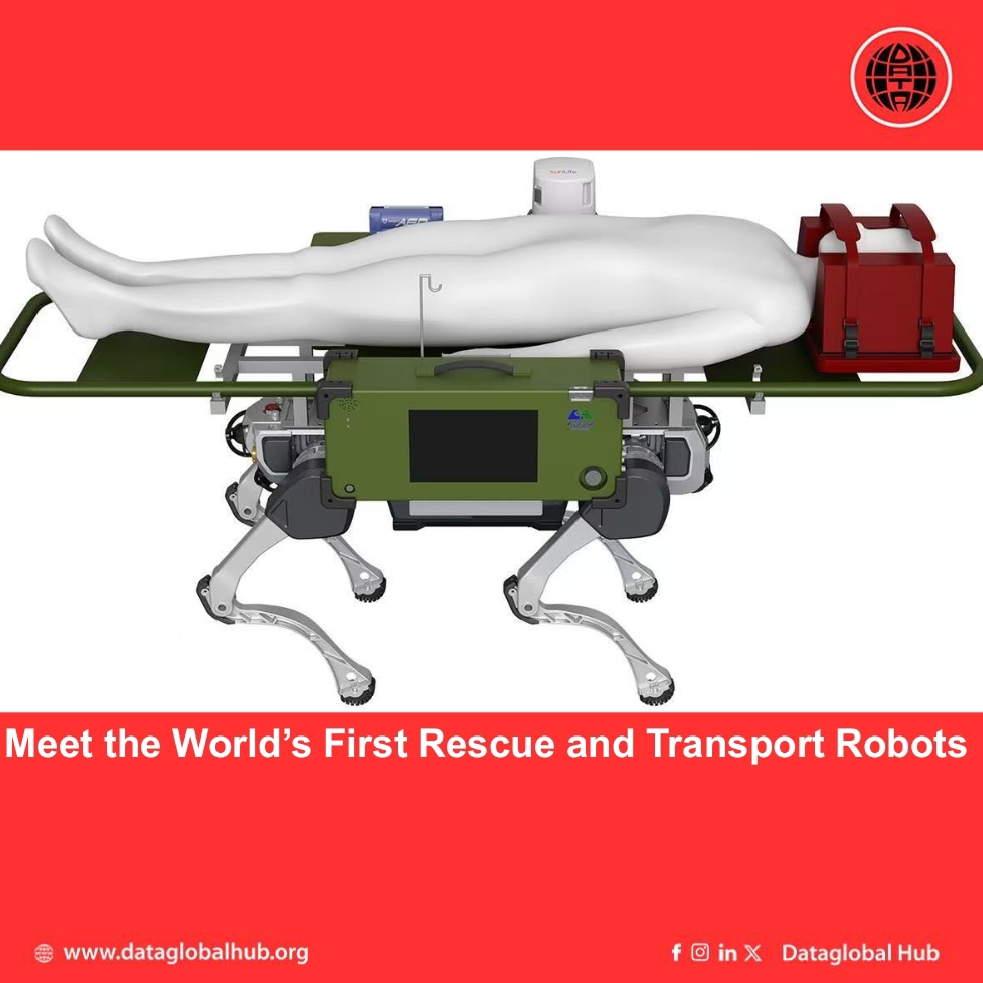
Meet the World’s First Rescue and Transport Robots: A New Step Forward in Emergency Rescue
Translate this article
Something remarkable happened in Beijing recently, CSSC Haishen Company and Hangzhou-based DEEP Robotics unveiled the world’s first emergency rescue robot and emergency transport robot, these machines are designed to step in where human responders face challenges, particularly in extreme conditions. They can operate reliably in temperatures from -20°C to 55°C, making them suited for a range of tough environments, from freezing disaster zones to scorching rescue sites.
These robot come with three movement options, quadrupedal, wheeled, or tracked allowing them to adapt to different terrains. Whether it’s climbing stairs, navigating slopes, or dodging obstacles, these machines are built to handle it. According to Science and Technology Daily, they can walk, run, lie down, and even climb over barriers, which makes them a practical choice for natural disaster rescue missions.
But their potential goes beyond disaster zones. These robots are also designed for complex operations, safety incident responses, battlefield first aid, and patient transport both before and during hospital care. It’s easy to see how this kind of flexibility could make a real difference in emergencies where every second counts.
Experts said these robots fill a long-standing gap in smart emergency medical equipment. Traditional rescue methods often rely heavily on human effort, which can be slow or risky in dangerous conditions. These machines, though, are efficient, lightweight, and fast qualities that could save lives when time is tight.
Huang Yuhong, chairman and chief engineer of CSSC Haishen Company, explained that the project draws on the company’s experience in medical equipment and robotics. Looking forward, they’re planning to weave in advanced tech like embodied intelligence, biomanufacturing, quantum technology, and 6G. The goal is to build a whole lineup of smart rescue tools that could strengthen China’s emergency response system.
It’s hard not to feel optimistic about what this could mean. These robots aren’t just a concept they’re here, climbing stairs and carrying stretchers. They’re a practical step toward tackling some of the toughest challenges in emergency rescue.
About the Author

Liang Wei
Liang Wei is our AI correspondent from China
Recent Articles
Subscribe to Newsletter
Enter your email address to register to our newsletter subscription!